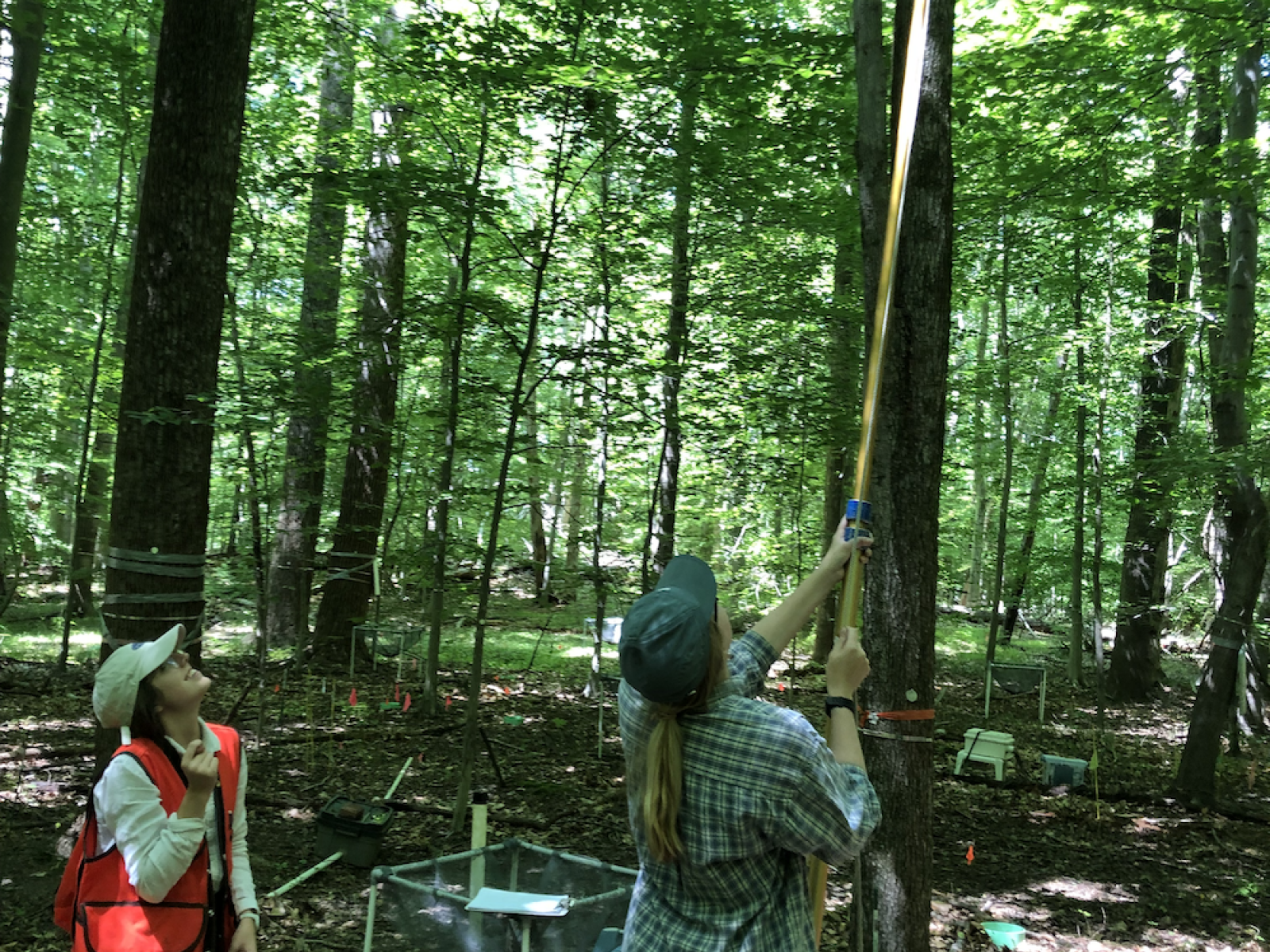Saltwater Exposure Affects Leaf Structure in a Coastal Forest
Researchers use a natural salinity gradient to explore how exposure to saltwater changes the structure and function of tree leaves in a coastal forest

Scientists use a pole pruner to sample tree leaves high in a forest canopy at the Smithsonian Environmental Research Center in Maryland, USA.
(Photo by Ben Bond-Lamberty | Pacific Northwest National Laboratory)
The Science
Sea level rise and increasing storms are stressing coastal forests, but the degree to which saltwater exposure changes the structure and function of tree leaves is poorly understood. This study measured how leaf shape—or specific leaf area (SLA) which is the ratio of leaf area to mass—changed along the natural salinity gradient of a tidal creek. They found that salinity was a significant factor to explain SLA changes after accounting for the effect on different species. Trees in the downstream areas of the creek had lower SLA, with thicker, smaller leaves which is consistent with increased stress.
The Impact
Greenhouse and laboratory studies have examined how trees respond to increasing exposure to saltwater, but it is unclear how this plays out in the real world of rising sea levels and increasing storms. The results of this study are consistent with the idea that the stress of chronic salinity exposure changes tree leaf shape and function, probably weakening their physiology and setting in motion processes that lead to the death of the forest. These findings are thus useful for understanding the growing effects of saltwater intrusion into upland forests, as well as parameterizing and testing ecosystem-scale models simulating climate change and storm disturbances in coastal forests.
Summary
This study took advantage of a natural salinity gradient of a temperate forest creek to study how differences in species, canopy position, and salinity exposure were associated with changes in SLA—the ratio of leaf area to mass. Trees directly exposed to the tidal creek had lower SLA in higher-salinity plots, which is consistent with greenhouse studies reporting that the stress of chronic salinity changes the leaf morphology and physiology of trees. The study concludes that incipient ecosystem state shifts at the coastal interface may be predictable by observing changes in leaf-level parameters like SLA, which is a change that typically precedes tree death and the formation of ‘ghost forests’. Further integrated research using both models and larger-scale manipulative field experiments is crucial to fully understanding ongoing structural and functional changes in coastal forests worldwide.
PNNL Contact
Ben Bond-Lamberty, Pacific Northwest National Laboratory, bondlamberty@pnnl.gov
Funding
Fieldwork for this study was performed as part of the PREMIS Initiative, a Laboratory Directed Research and Development program at Pacific Northwest National Laboratory (PNNL) and supported by the Smithsonian Environmental Research Center. L.M.H. was supported by a Department of Energy (DOE) Science Undergraduate Laboratory Internship (https://science.osti.gov/wdts/suli). Data analysis and writing were supported by COMPASS-FME, a multi-institutional project funded by the DOE, Office of Science, Biological and Environmental Research, as part of the Environmental System Science Program. PNNL is operated by Battelle for DOE under Contract DE-AC05-76RL01830.
Published: October 5, 2023
Bond-Lamberty B., L. M. Haddock, S. C. Pennington, U. U. Sezen, J. Shue, J. P. Megonigal, 2023. "Salinity exposure affects lower-canopy specific leaf area of upland trees in a coastal deciduous forest." Forest Ecology and Management https://doi.org/10.1016/j.foreco.2023.121404.